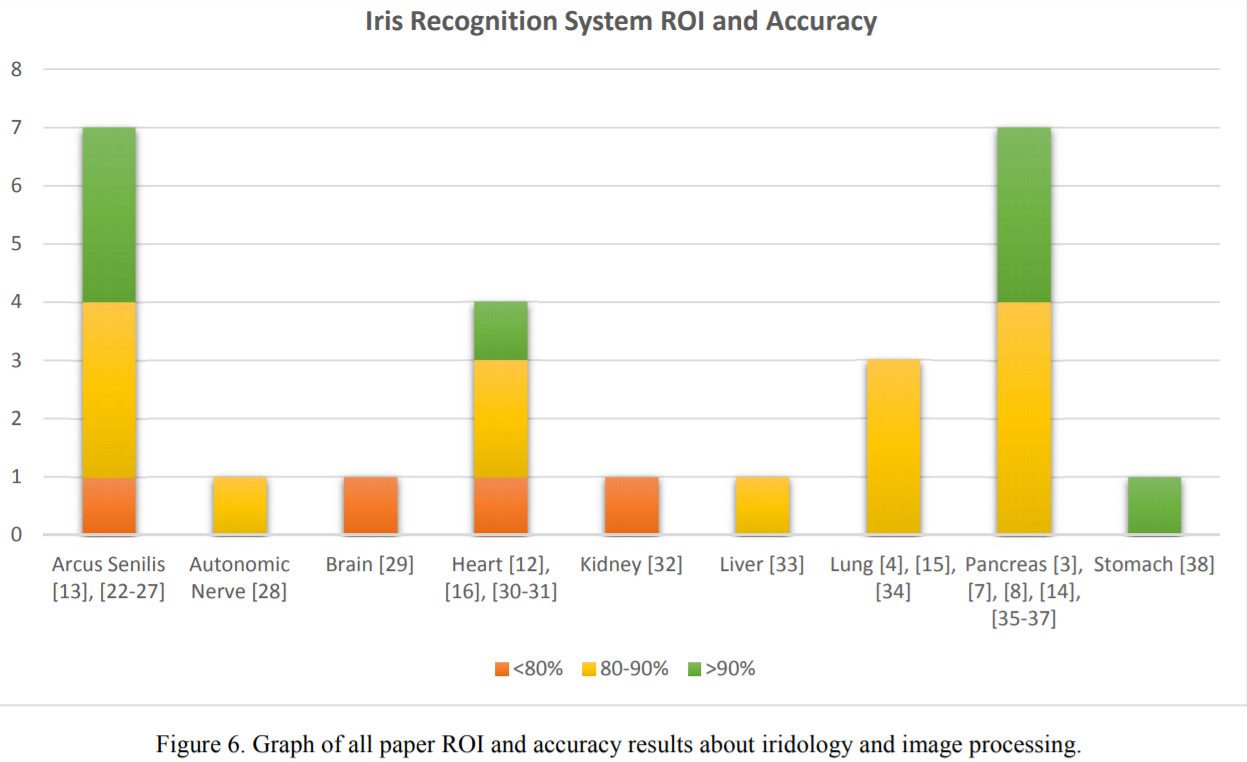Abstract — Iris contains some information about human body and organ condition. Iridology is a scientific study of the iris structure to get some information that represents the condition of the various organs by examining the tissue strengths and weaknesses in the iris. With the rapid development of image processing, iridology has become more popular and reliable. In recent years, many systems that adopt iridology have been developed to diagnose a disease by analyzing a certain part of the iris or so-called Region of Interest (ROI). Typically, iris recognition systems consist of three main functions namely image pre-processing, feature extraction, and classification. This paper shows all the regions that have been studied and the accuracy of their iris recognition system.

CONCLUSION
As we can see in figure 6, most popular ROI that have been researched is Arcus Senilis and Pancreas, with the highest accuracy of 97.78% for ROI of Arcus Senilis and 95.81% for ROI of Pancreas. The iris recognition system with the highest accuracy is in paper Ridza [23]. In this
paper, they use Gray Level Co-Occurrence Matrix (GLCM) feature extraction and Bayesian regularization (BR) classification to diagnose either the subject is suffering from the disease or not.
Authors: Robby Alphonsus Hali, Andi Wahju Rahardjo Emanuel, Magister Informatic, Universitas Atma Jaya Yogyakarta
Yogyakarta, Indonesia
Yogyakarta, Indonesia
Download Full Abstract: AReviewofIrisRecognitionSystemROIandAccuracy.pdf
